
Hasselblad Xpan,
panorama
camera By Leif Karlsson
Xpan Specifications:
The Hasselblad Xpan is a viewfinder camera that uses 35 mm film.
The exposed frame is 24mm high and 65 mm wide, width/height ratio is 2,7.
Is is also possible to shoot standard 24 x 36 mm frames with a flick of a switch,
but I cannot really see why to use a panorama camera in a non panorama mode.
The camera has center weighed light metering and you can choose between
manual or auto exposure mode. The auto mode is aperture priority, aperture
is set on the lens and the camera calculates the exposure time.
In manual mode a diode next to the viewfinder tells you when you got it right.
The camera was constructed and manufactured by Fuji in Japan.
The Japanese version was named Fuji TX-1, had a different exterior but the
internal was exactly the same as the camera that in the rest of the world was
sold as the Hasselblad Xpan.
The Hasselblad Xpan is a viewfinder camera that uses 35 mm film.
The exposed frame is 24mm high and 65 mm wide, width/height ratio is 2,7.
Is is also possible to shoot standard 24 x 36 mm frames with a flick of a switch,
but I cannot really see why to use a panorama camera in a non panorama mode.
The camera has center weighed light metering and you can choose between
manual or auto exposure mode. The auto mode is aperture priority, aperture
is set on the lens and the camera calculates the exposure time.
In manual mode a diode next to the viewfinder tells you when you got it right.
The camera was constructed and manufactured by Fuji in Japan.
The Japanese version was named Fuji TX-1, had a different exterior but the
internal was exactly the same as the camera that in the rest of the world was
sold as the Hasselblad Xpan.
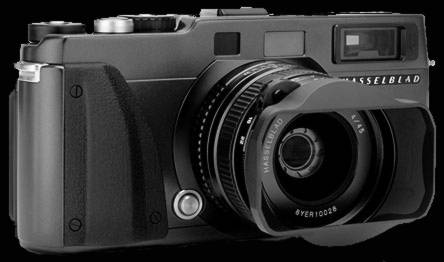
Xpan Lenses:
The standard 45 mm f:4 lens was usually sold together with the camera body.
It covers an angle of 71 degrees horizontally. This is a wide angle lens with
good depth of field when stopped down to f 11 or more.
The vignetting (light fall-off) is clearly visible towards the corners; I strongly
recommend that you always use the center filter with this lens. The filter “steals”
one exposure stop but as a reward you will get evenly exposed images.
The 45mm lens is surprisingly small considering the fact that it is a medium format
lens, covering an image frame corresponding to a 6 x 7 camera (horizontally).
The lens is very sharp at every aperture setting! Sharpest at F8-11, but I don’t
hesitate to use f 16-22 when hyperfocusing or open it up to f 4 when I use the
camera handheld. If the focus is set correctly, the image will appear very sharp!
This is the lens I use most of the time, at least 90 per cent of my panoramas are
made with the 45 mm lens.
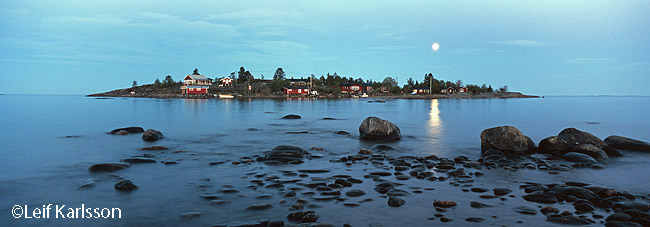
“Lillhaddingen and moon,Sweden”
Xpan with 45 mm lens on tripod. Exposure: 8 seconds f: 16. A classic landscape composition with horizon 1/3-
Xpan with 45 mm lens on tripod. Exposure: 8 seconds f: 16. A classic landscape composition with horizon 1/3-
from the top of the frame and moon with
reflection 1/3
from right side of the image. The stones in the foreground
gives depth
in the image.
The 90 mm f:4 is a
good complement to my Xpan equipment. The vignetting is not so
disturbing on this lens. If stopping it down to f 8-11 the vignetting almost disappears.
I don’t use the center filter with the 90 mm lens.*
It's a little bit tricky to set the focus correctly. The depth of field isn't as great as it
is on the shorter lens, but despite this the 90mm is a very sharp lens when you get
it right.
When installing the 90 mm lens on the body the frame in the viewfinder changes to a smaller frame. It makes framing and composition a little bit trickier.
disturbing on this lens. If stopping it down to f 8-11 the vignetting almost disappears.
I don’t use the center filter with the 90 mm lens.*
It's a little bit tricky to set the focus correctly. The depth of field isn't as great as it
is on the shorter lens, but despite this the 90mm is a very sharp lens when you get
it right.
When installing the 90 mm lens on the body the frame in the viewfinder changes to a smaller frame. It makes framing and composition a little bit trickier.
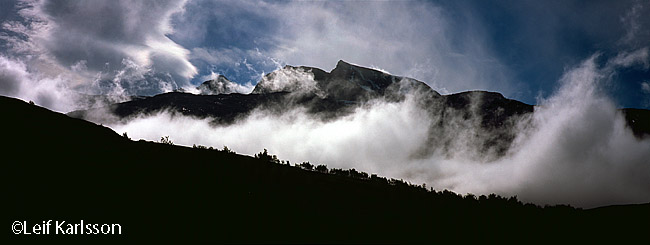
“Okstind peaks and clouds”
Xpan with 90 mm lens, handheld. Exposure:
1/250, f: 11. Strong contrast in the image.
The 30 mm f:5,6
comes with an external viewfinder and a dedicated center filter.
This lens is super-wide and covers an angle of 94 degrees horizontally.
I have never used the 30 mm lens myself, I for sure would like to own this lens but
have found it to be a bit expensive.
This lens is super-wide and covers an angle of 94 degrees horizontally.
I have never used the 30 mm lens myself, I for sure would like to own this lens but
have found it to be a bit expensive.

The lenses from left to right the 30mm F5.6, 45mm F4, 90mm F4 the Center filter and finaly the viewfinder for the 30mm lens
My opinion about the Hasselblad Xpan:
The camera is surprisingly compact considering the fact it is a panorama camera.
In my hand the Xpan feels solid and a bit heavy. It definitely has a feel of quality.
Camera controls are easy to use and understand.
A spirit level can be installed in the flash shoe. I strongly recommend using the level
when shooting panoramas with this camera, a small tilt during exposure will ruin the picture!
The viewfinder is bright with a white frame that is perfect for the 45 mm lens.
The viewfinder has no information of shutter speed or aperture. This information
shows on the display at the backside of the camera. This is not a problem when you
use the camera on a tripod but a bit annoying when handheld. This is a flaw that was corrected on the second version of the camera, the Xpan II.
The compact size of the camera makes it possible to use the Xpan handheld during
daylight conditions. A large format 6x17 camera would be tricky (not recommended)
to use handheld. The attachment for mounting the camera on a tripod is located far to
the left under the body. I found this weird in the beginning, it works for me but requires
a stable tripod.
A bracket that could be installed under the camera moved tripod attachment to the
center and was sold as an accessory by Kirk Enterprises.
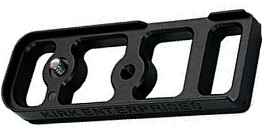
3rd part maker Kirk make this plate that moves
the tripod thread to the center of the Xpan body
The center weighed light metering is very accurate. Most of my images have been
correctly exposed in the Auto (aperture priority) mode.
However in low-light conditions with exposure times of 1 second or longer my camera starts to underexpose, both in Auto and Manual mode.
In these conditions I always check the light with a digital camera as light meter
and then calculate correct settings for my Xpan.
I haven't heard others having this problem so I believe it is my camera that
is due for maintenance.
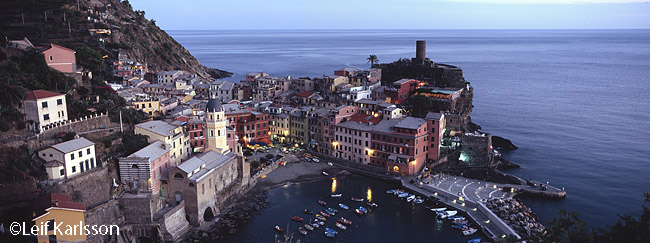
“Vernazza,
Italy”
Xpan with 45 mm lens on tripod. Exposure: 1 second, f: 8. Horizon is close to upper end of image.
Xpan with 45 mm lens on tripod. Exposure: 1 second, f: 8. Horizon is close to upper end of image.
Conclusion:
The Hasselblad Xpan is a very fine panorama camera. The build quality of the camera
is great and the quality of the exposed panoramas is excellent.
As a panorama photographer I have tried to use other methods to make panoramas.
I have used a 6x17 camera (see this homepage). The quality of an exposed 6x17 cm filmstrip is stunning and will of course win over the 6,5x2,4 cm filmstrip from the Xpan. The exposed film area from a 6x17 camera is 6,5 times larger and the Xpan can't
compete with that. But the Hasselblad Xpan is so much neater to use, and it can be
used handheld, you can make 10 panoramas with the Xpan during the time it takes
to set up a 6x17 camera. Because of this the Xpan will be my choice!
Today's most common way to create panorama images is to take several photos with
a digital camera and afterwards stitch them together. I have tried that as well with
various results. Images will be difficult to stitch correctly if there are to few details
in the frame, and the final image will actually be created with the help of a computer
and suitable software, this can be time-consuming.
If you want to take many panoramas with high quality and need to have a good
workflow in the process the Xpan is the winner!
The Hasselblad Xpan is a very fine panorama camera. The build quality of the camera
is great and the quality of the exposed panoramas is excellent.
As a panorama photographer I have tried to use other methods to make panoramas.
I have used a 6x17 camera (see this homepage). The quality of an exposed 6x17 cm filmstrip is stunning and will of course win over the 6,5x2,4 cm filmstrip from the Xpan. The exposed film area from a 6x17 camera is 6,5 times larger and the Xpan can't
compete with that. But the Hasselblad Xpan is so much neater to use, and it can be
used handheld, you can make 10 panoramas with the Xpan during the time it takes
to set up a 6x17 camera. Because of this the Xpan will be my choice!
Today's most common way to create panorama images is to take several photos with
a digital camera and afterwards stitch them together. I have tried that as well with
various results. Images will be difficult to stitch correctly if there are to few details
in the frame, and the final image will actually be created with the help of a computer
and suitable software, this can be time-consuming.
If you want to take many panoramas with high quality and need to have a good
workflow in the process the Xpan is the winner!
Film and scanning:
I have always used slide film, mostly Fuji Velvia 100, in my Xpan. I like this saturated
film and find it ideal for landscape photography. It’s easy to judge the result of a
positive slide film strip put on a light table and the selection of which images to scan
is made quickly.
The downside of slide film is that it has very little exposure tolerance. Negative film
is easier to handle in this aspect, but also more difficult to judge the result of before
scanning (Some can but lots of experience is required). I scan my panoramas with a dedicated film
scanner for 35mm film, a Canoscan FS-4000 US.
Since the scanner is made for 35x24 frames The Xpan film has to be scanned in two
halves and then stitched together, see tutorial here:Xpan scanning A medium format
film scanner or a good flatbed scanner is a more production efficient solution for
scanning panoramas from the Xpan.
I have always used slide film, mostly Fuji Velvia 100, in my Xpan. I like this saturated
film and find it ideal for landscape photography. It’s easy to judge the result of a
positive slide film strip put on a light table and the selection of which images to scan
is made quickly.
The downside of slide film is that it has very little exposure tolerance. Negative film
is easier to handle in this aspect, but also more difficult to judge the result of before
scanning (Some can but lots of experience is required). I scan my panoramas with a dedicated film
scanner for 35mm film, a Canoscan FS-4000 US.
Since the scanner is made for 35x24 frames The Xpan film has to be scanned in two
halves and then stitched together, see tutorial here:Xpan scanning A medium format
film scanner or a good flatbed scanner is a more production efficient solution for
scanning panoramas from the Xpan.
So where can I get a Xpan?:
The Xpan went out of production in 2005. So if you want to buy one the only option
is the second-hand market. I had a glimpse at eBay
up a little bit since 2003 when I bought my used Xpan.
Maybe the Xpan has become a collector’s camera. A nice 30 mm lens had a "BUY NOW"
prize at 5200 USD, which is more than the lens was sold for as new.
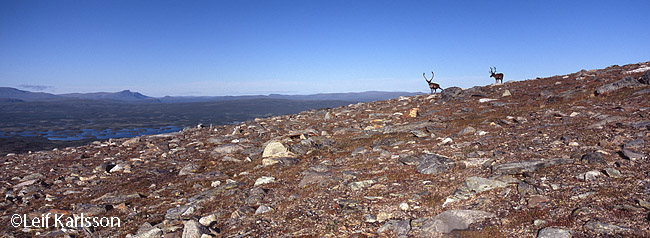
“Reindeers
in Vindelfjällen, Sweden”
Xpan with 90 mm lens, handheld. Exposure: 1/125, f: 5,6. A snapshot. I was climbing a peak when the reindeers showed up. They stopped for a few seconds when they discovered the photographer.
Xpan with 90 mm lens, handheld. Exposure: 1/125, f: 5,6. A snapshot. I was climbing a peak when the reindeers showed up. They stopped for a few seconds when they discovered the photographer.
Composing a panorama:
In the beginning I found it difficult to make compositions with the Xpan.
With what should I fill the long and narrow frame to make an interesting image?
No big deal.
With some practice, “learning by doing”, I got used to the panorama format and now
I feel more comfortable with panoramas than “normal” images.
There are many rules and theories when it comes to composition. Sometimes I keep
some of the “rules” in mind when composing an image, but I don't hesitate to break
the rule of thirds when it feels right.
I have found that I just press the shutter release when the image looks good and it
feels right! I believe this works for me, at least it has lead to a personal style when it
comes to panoramic landscape photography.
If the images are good or badly composed I can leave to others to judge. The images
shown together with this article are examples of my photography and a short text
together with the image will give a hint how I did when I took the picture.If you want
to see more of my panorama images, feel free to surf to www.lk-panorama.com .
/Leif Karlsson

“Grand Canyon, USA”
Xpan and 45 mm lens on tripod. Exposure: 2 seconds, f:5,6. Nice warm light ca. 5 minutes after sunset.
Xpan and 45 mm lens on tripod. Exposure: 2 seconds, f:5,6. Nice warm light ca. 5 minutes after sunset.
Xpan Links
Why Hasselblad Xpan is discontinued
"Hasselblad has, unfortunately, been forced to discontinue the manufacture
of the XPan system There are a number of reasons why the XPan cannot be
continued, but the timing has been forced upon us by the European Community
in the form of the Disposal of Hazardous Waste Regulations.
These come into effect in mid July (2006) and prevent electronics manufacturers
using lead solder in their circuit boards. The XPan is evidently manufactured using
lead, and falls foul of these new rules. The cost of redesigning the circuits in a way
that removes the need for lead solder is too high, given the declining worldwide sales
of the camera. Consequently Hasselblad have been forced into the decision not to
produce any more."
Source:ephotozine.com
"Hasselblad has, unfortunately, been forced to discontinue the manufacture
of the XPan system There are a number of reasons why the XPan cannot be
continued, but the timing has been forced upon us by the European Community
in the form of the Disposal of Hazardous Waste Regulations.
These come into effect in mid July (2006) and prevent electronics manufacturers
using lead solder in their circuit boards. The XPan is evidently manufactured using
lead, and falls foul of these new rules. The cost of redesigning the circuits in a way
that removes the need for lead solder is too high, given the declining worldwide sales
of the camera. Consequently Hasselblad have been forced into the decision not to
produce any more."
Source:ephotozine.com
